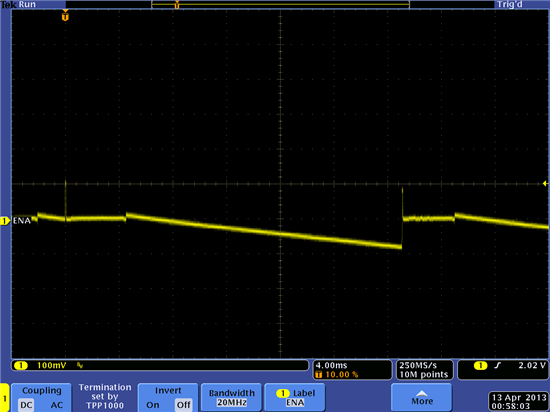Hey guys,
We're seeing a dropped BT connection anywhere from ~10sec to several minutes, related to POWER_SAVING. We believe we have a HW issue related to the internal voltage regulators.
We have designed a circuit exactly the same as the CC2541 KeyFob reference design. The only differences are the board layout, the 32.768KHz crystal, and slight differences in the balun component values.
The SW is the default BLE stack v.1.3 KeyFob app, with very minor changes like turning on initial advertising and commenting out the accelerometer init code (no accel. in our design), and just replacing the accel read function with hardcoded, static incrementing x,y,z values. We have it communicating with the default TI iPhone app showing these values.
It runs great on the CC2541DK-MINI KeyFob eval board, BUT running the exact same code (which just pumps out X,Y,Z) on our board fails after a random period of time only when POWER_SAVING is enabled.
See our previous thread: http://e2e.ti.com/support/low_power_rf/f/538/p/256304/902292.aspx#902292
Now, if I change the code in hal_sleep.c to #define HAL_SLEEP_TIMER PM1 (instead of PM2), the code runs OK on our board for much much longer. My understanding is that we're now ensuring that the internal voltage regulators remain ON (PM1) during sleep.
What could be causing troubles with the internal voltage regulators? Any thoughts out there?
NOTE: We believe we've eliminated the 32.768KHz crystal as the problem since we injected a perfect 32.768001KHz (50% duty cycle) signal from a signal generator per app note AN#119. We've also output it on P0.0 via CKOEN. We also previously swapped the crystal for the exact one used on the CC2541DK EB… and tried different loading caps between 15pF and 18pF. All is good… seeing a really nice 32.768KHz clock.
ALSO NOTE: Note we are able to replicate this problem on all our boards (about 10).
Any thoughts out there?
Many Thanks!
Brian


